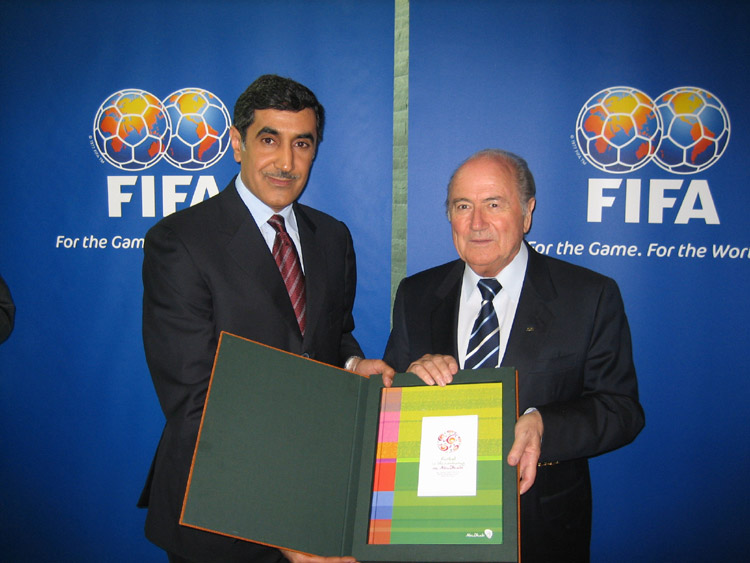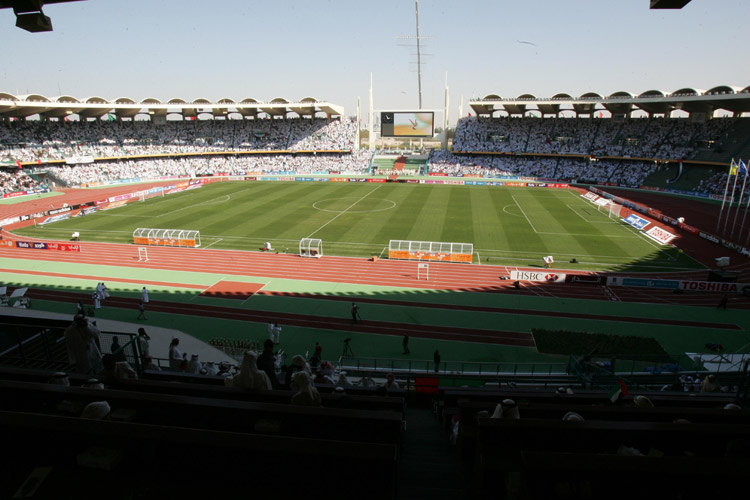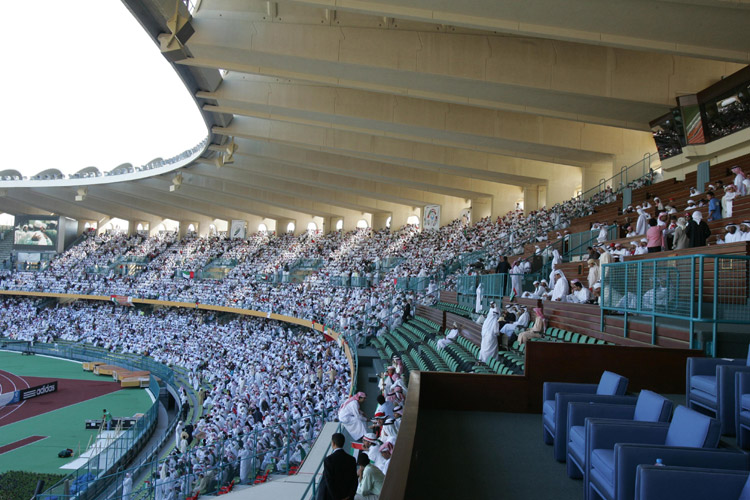|
Very few would have thought that the UAE would hold an edge over
more established soccer destinations like Australia and Japan
when the bidding process opened at the FIFA headquarters to host
the next two editions of the FIFA World Clubs Championships.
But when a high-level delegation led by UAE FA president
Mohammad Khalfan Al Rumaithi returned from Zurich, the UAE had
announced in a swift move that it is more than willing to play
host to some of the big competitions on the international stage.
The UAE bid to host the 2009 and 2010 FIFA Club World Cup
Championship had been submitted by Al Rumaithi in person to FIFA
President Sepp Blatter in the presence of FIFA General Secretary
Jerome Valcke and FIFA Head of Competitions Jim Brown a few
weeks prior to the deadline in April.
Al Rumaithi had been full of confidence on submitting the bid.
“Things do look encouraging,” Al Rumaithi had stated after his
return from Zurich. But what perhaps turned things in favour of
the UAE is the total backing of the Government in staging such a
high-profile event.
 |
|
Mr MOhammad Khalfan Al Rumaithi & Mr.
sepp Blatter
|
So when the decision to hold the competition in 2009 and 2010
was announced by FIFA on May 27, no one was particularly taken
by surprise. “We had conveyed to FIFA the support of the
Government, so in a way we were not too surprised that we are
successful in getting the football world to take notice of this
region as a whole,” Al Rumaithi stated.
But what many did not notice is the hard work put in by all
concerned to ensure the bid was successful. The Abu Dhabi Sports
Council roped in the specialised services of abold – a
German-based brands and sports communications company.
This company went about its task in a methodical manner. They
were not new to the scene when it came to strategic planning and
realisation from the bidding phase to its implementation of
major events. They had the backing of their Frankfurt-based
technical partners as&p and ProProjekt, who ensured that the UAE
bid was the best one when compared to that placed by both Japan
and Australia.
And with credentials like the successful bidding and staging of
the 2006 FIFA World Cup in Germany, South Africa’s bid for the
2010 FIFA World Cup and Leipzig’s bid for the 2012 Summer
Olympic Games, Abu Dhabi was fully justified in putting their
faith in a company like abold.
But perhaps the most exciting thing besides actually having the
best teams in the world playing here is the fact that a club
from the UAE may get a chance to compete in this tournament.
Because one club from the host nation is supposed to play the
winners of the Oceania Champions League and the winners join the
champion clubs of Asia, Africa, Europe, South America and North
America.
 |
 |
“The AFC President Mohammad Bin Hammam has always maintained
that the future is Asia. So by hosting such a prestigious
competition, we are justifying this belief and we are keen to
ensure the tournament is the best ever,” promised Hamad Bin
Brook, Chairman of the Professional League Committee for the
UAEFA.
This annual competition has always proved to be one of the
toughest. Traditionally, it was the European champions who would
be expected to dominate. But its brief history indicates that
this has not been so. After missing out on the first three
editions to champions from South America, it was fourth time
lucky for Europe as AC Milan capped a perfect 2007. Inspired by
their Brazilian star Kaka, there was no denying the Rossoneri
this time as they saw off a challenge from Argentina’s Boca
Juniors in the deciding game.
On a personal note, Kaka had every reason to gloat and
celebrate. He won the adidas Golden Ball and the Toyota award
for the tournament’s best player.
What a memory this competition has been to the fans. This was a
competition laid bare for a genius like Kaka. Following a none
too great season back home in Italy’s Serie A, Carlo Ancelotti’s
boys knew what they were there for.
The Rossoneri march towards glory began with a solitary goal win
against first-time entrants Urawa Reds, thanks to a Clarence
Seedorf goal. At the other end, Argentina’s Boca Juniors booked
their place in the final showdown against AC Milan following an
identical 1-0 victory over Tunisian club Etoile Sportive du
Sahel. It was a sort of grudge meeting especially because the
Italian side had lost to the South Americans in the final of the
Inter-Continental Toyota Cup in 2003.
The final lived up to its billing, producing six goals in which
AC Milan displayed an entertaining brand of soccer to win 4-2 in
Yokohama and take the trophy to Europe for the first time. If
Kaka was the inspiration, Paolo Maldini, Filippo Inzaghi and
Seedorf showed that they are among the best in the business. And
to consider that the average age of the winning squad was close
to 31 years. The victory, when it came, looked fully justified
and drew praise from some of the soccer legends from the
continent, perhaps because this was the first time that the Cup
had landed in Europe.
Japan will once again host the competition at the end of this
year before paving the way for the UAE to take centre-stage for
2009 and 2010. And what a memorable occasion that will be!
What is the FIFA Club World Championship?
The FIFA Club World Championship was played for the first time
in 2000 in an eight-team format and with a home team joining the
selected and invited teams. After the second edition was first
scheduled for 2001, then postponed to 2003 and eventually
cancelled, the tournament returned in 2005, replacing the
traditional Toyota Cup in a new six-team format with the
participation of the six continental champions.
In March 2007 it was reported that FIFA accepted a request by
CBF and Palmeiras to consider the 1951 Copa Rio de Janeiro as
the first official Club World Championship. A definite decision
was taken by the FIFA Executive Committee on December 16, 2007
who decided that no tournaments other than those organised
directly by FIFA in 2000 and since 2005 will be considered the
Club World Championships.
After the next two editions in 2009 and 2010, the tournament
will be organised right here in the UAE, before returning to
Japan in 2011. All matches are supposed to be played at the
Zayed Sports City and the Mohammad Bin Zayed Stadium, the home
of Al Jazira Club in Abu Dhabi.
|